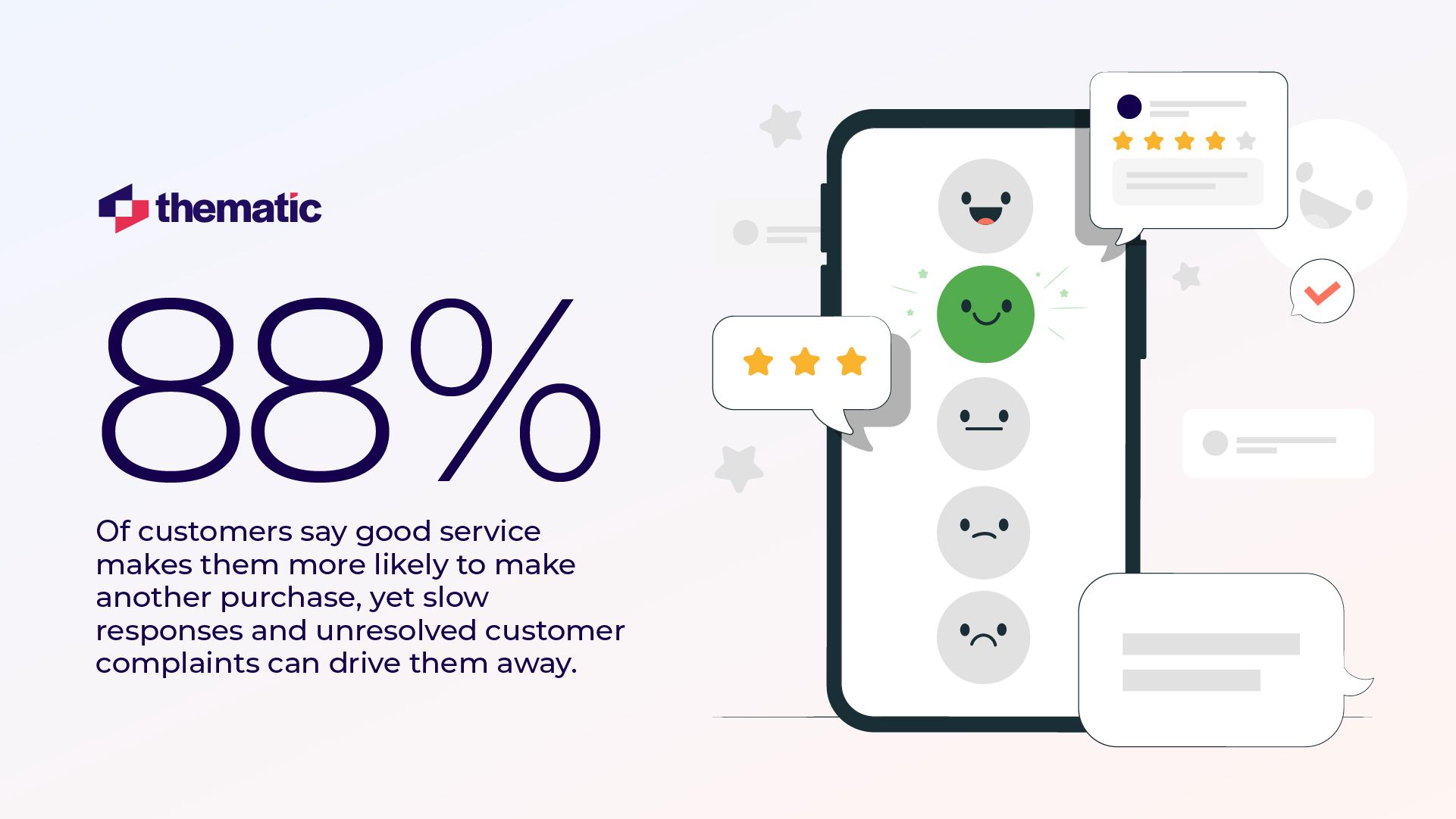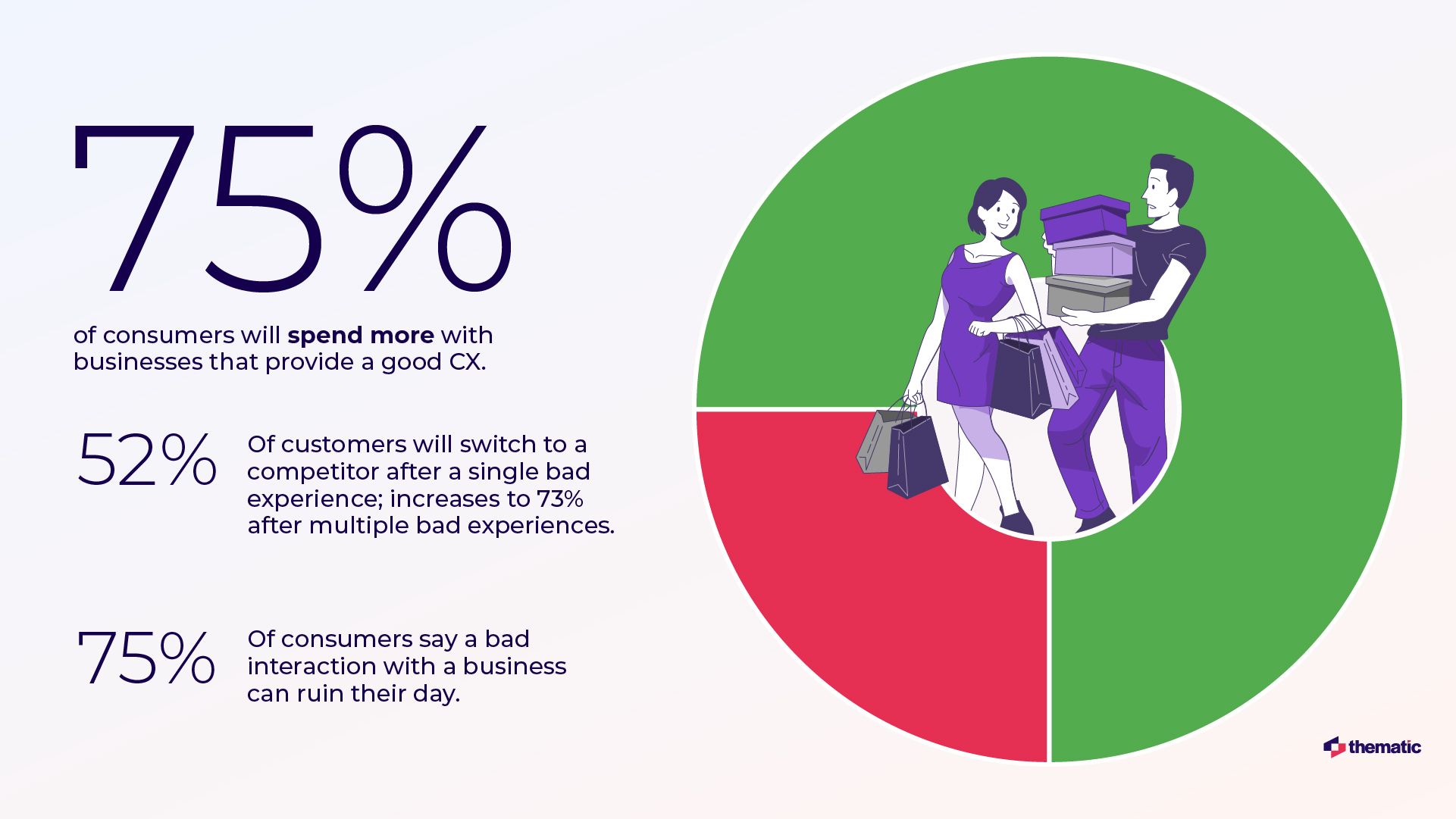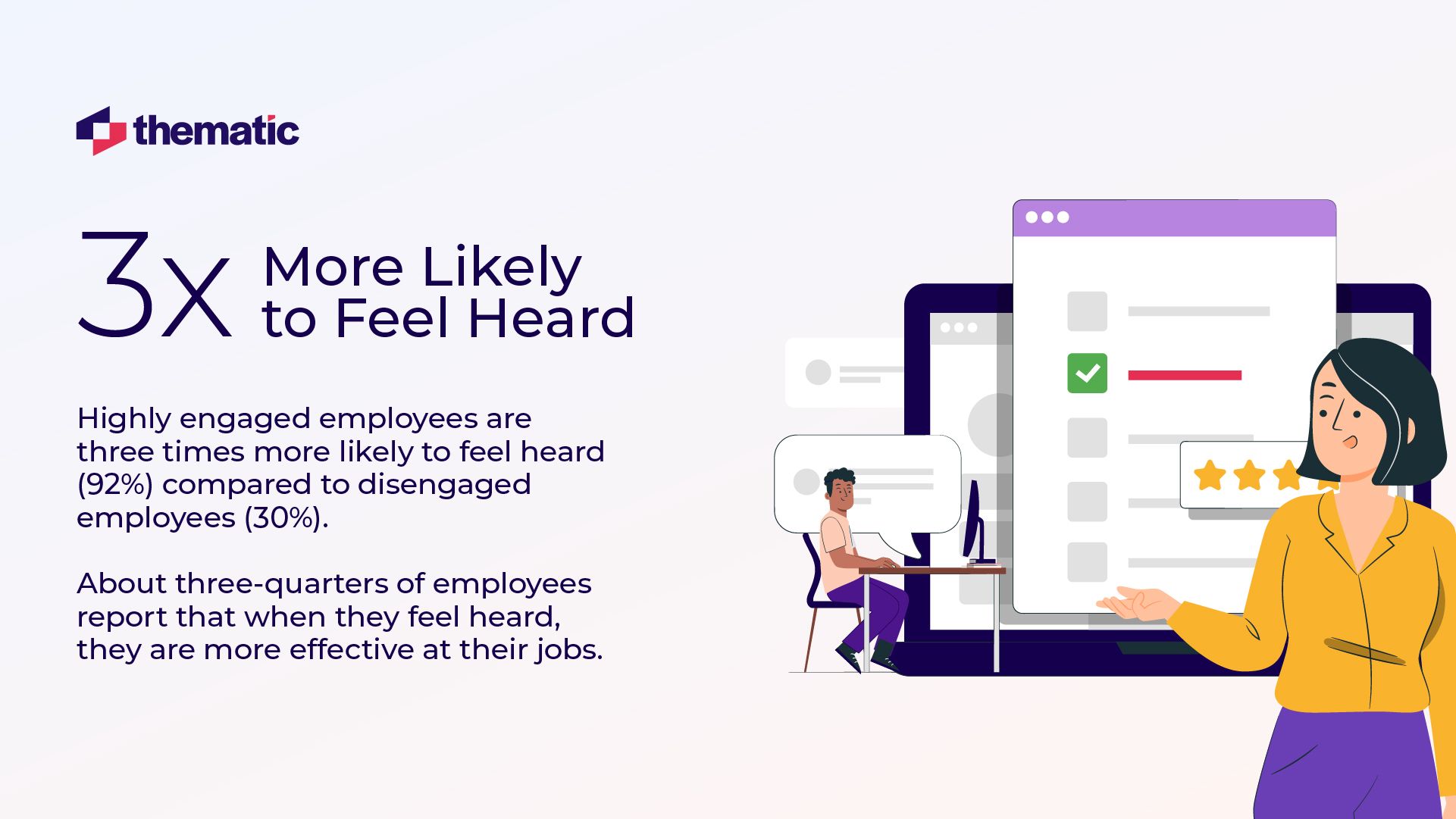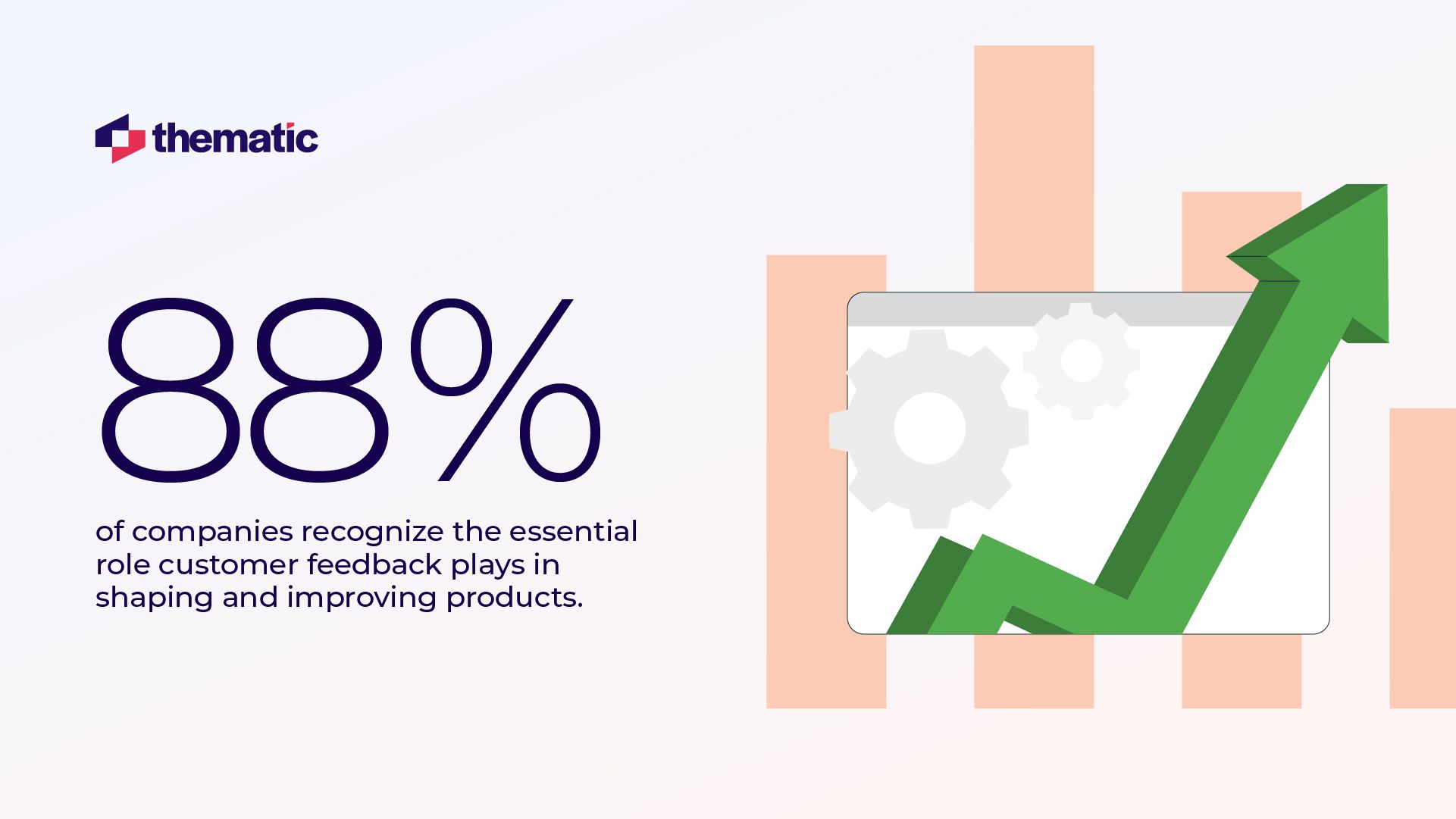
Explore real-life applications of text analytics, from customer support to healthcare and market research.

Did you know that in 2023, the world created, captured, copied, and consumed 123 zettabytes of data? Let me help you picture this: one zettabyte is enough to store all the movies ever made—not once, but about 250 million times over! By 2028, that number is projected to soar to over 394 zettabytes.
Why does this matter? Hidden in this massive mountain of information are valuable insights that can alter how businesses, healthcare, and countless other industries operate. But how do you unearth these insights? Through text analytics–transforming textual data into crystal-clear insights for smarter decisions.
If you’re still wondering how text analytics can help businesses, here are 10 impactful text analytics applications today.
In customer support, speed and accuracy are everything. According to Salesforce, 88% of customers say good service makes them more likely to make another purchase, yet slow responses and unresolved customer complaints can drive them away.
Businesses, of course, know they cannot ignore the voice of customers and that customer review analyses are of utmost importance. But how do they make sense of all the feedback? That’s where text analytics tools come in. It analyzes feedback, identifies patterns, and spots recurring issues. Then, businesses can proactively adjust their products or services to improve the customer experience.
Such is the case of DoorDash, which used Thematic’s text analytics to review support tickets. They uncovered merchant frustrations, like slow system updates. From the insights, they developed solutions to reduce tool load times from 11 seconds to under 3 seconds, delighting users.

Market research is used by 77% of B2B, 82% of B2C, and 83% of B2B2C companies to stay competitive. For comprehensive research, businesses don’t just crunch numbers (quantitative data); the comments (qualitative data) are just as valuable. Unfortunately, qualitative data, being unstructured, is more challenging to interpret. Would you consider reading all comments from 1,00 respondents? That’s why businesses turn to text analytics for help with qualitative data analysis. This way, they make sure all data is analyzed, and they get accurate insights without breaking a sweat.
Also important in market research is looking into competition. Text analytics makes this easy with entity recognition—identifying brands, products, or locations in feedback. With these details, businesses better understand where and how to market their products or services.
A great example of text analytics in market research is MMGY’s analysis of 8,000 monthly customer reviews. By combining feedback with demographic and RFID data and applying theme discovery, including topic modeling, they identified recurring issues like dissatisfaction with drink purchases on specific ships. Segmenting themes by transactional data, they pinpointed concerns for specific groups, showing how text analytics turns insights into strategies that boost satisfaction and business success.
Text analytics and sentiment analysis go hand-in-hand.
Sentiment analysis identifies emotions and opinions in text. It’s especially helpful in analyzing customer reviews to track satisfaction and understand brand perception. This is important because 66% of consumers who believe a business cares about their emotional state will likely become repeat customers.
But how does text analytics make sentiment analysis possible?
It starts with natural language processing (NLP), which breaks down text into manageable parts, such as words and phrases, to detect emotions. Using machine learning, large language models, and generative AI, it categorizes feedback as positive, negative, or neutral. For example, a review like “The service was excellent, but the wait was too long” links positive sentiment to service and negative sentiment to wait times.
When you want to understand how your customers truly feel but can’t find time to really dive into all the feedback you’ve gathered, text analytics will make sentiment analysis solutions a walk in the park.
Customer experience can make or break your business. Here’s what the numbers say:
Text analytics helps businesses stay on the right side of these stats. Just think about it: if text analytics can find out what your customers like and don’t, then you know what steps to take. Now, imagine not having to wait for months or even days to get these insights. That’s how Starbucks does it on Twitter. They adjust product launches depending on what their customers are saying.
Vodafone New Zealand did something similar. Using a thematic analysis solution for text analysis of customer feedback, they discovered delays in resolving complaints to be a common issue. Having found this, Vodafone improved Touchpoint Net Promoter Score (tNPS) within nine months. Text analytics helps you do these things; no expert data scientist is required; it is just a trustworthy tool.

Employee feedback is critical for building a positive workplace environment. Highly engaged employees are three times more likely to feel heard (92%) compared to disengaged employees (30%). About three-quarters of employees report that when they feel heard, they are more effective at their jobs.
Organizations use text analytics to analyze employee surveys and feedback. From raw these text documents, they gather insights that could help them improve employee engagement and, ultimately, performance.
Text analytics uncovers workplace issues, improves communication, and enhances employee satisfaction. After all, in a business, employee satisfaction is just as important as customer satisfaction. Text analytics helps businesses find ways to make employees feel valued and engaged, fostering loyalty and productivity.

Social media is where many customers spend a lot of time. That explains why 72% of businesses use social listening to better understand customer preferences and develop effective strategies.
Text analytics proves very important here. It extracts insights from platforms like Twitter, Facebook, and Instagram, helping businesses
Text analytics can detect spikes in conversations about a product launch or gauge customer reactions to a campaign. Sounds familiar? Yes, that’s like the Starbucks case mentioned earlier. Monitoring what their people say online, they adjust their product launches.
Using text analytics for social media listening can allow businesses to make data-driven decisions faster.
With how text analytics can dive into mountains of data, find trends, detect emotion, and even identify locations or other demographics, it’s no surprise it can help with fraud detection. It could comb through tons of data to spot anything suspicious. In a bank setting, for instance, it can analyze transaction logs to flag unusual activity—like someone trying to log in multiple times or making sudden, large withdrawals.
In insurance, imagine a customer filing a claim with inconsistencies in their story. Text analytics can compare their claim to past data and detect patterns that don’t add up. These real-time insights help companies stop fraud in its tracks, proving why it’s one of the most valuable text analytics applications today.
Every company that wants to boost its visibility online uses search engine optimization (SEO). In SEO, text analytics helps you figure out what people are searching for and which words will get your content noticed.
Let’s say you run a store selling hiking gear. Text analytics can sift through customer reviews, competitor websites, and search trends to uncover phrases like "most durable hiking boots" or "top-rated backpacks for long trips." Knowing that these are common themes, you can create content that will help you rank for these keywords and appear on the first page of the search engine results page (SERP) whenever people search for these terms.
By using these phrases in your content, you make it easier for people to find you online. You’re not just adding words. Doing these helps your content show up where it counts.
One of the many text analytics applications is in product development. Note that customer feedback is like the compass here—it points businesses in the right direction for improving products–and 88% of companies recognize this.
Reviews and surveys reveal what customers love or dislike, guiding better decisions. Atlassian used Thematic’s text analytics, particularly its NLP feature, to analyze customer feedback and tackle a recurring issue: customers found some features confusing and hard to use. Having identified the key pain points, Atlassian prioritized improvements that mattered most to users.This approach helped refine their products, boosting customer satisfaction. When you analyze customer feedback, you turn raw comments into valuable insights, driving innovation and smarter product development.

Legal e-discovery is like digging through a mountain of emails, contracts, and records to find the one document that cracks the case. It’s a critical step in lawsuits where legal teams exchange evidence in digital form. Text analytics simplifies this process by scanning thousands of documents, identifying key phrases, dates, and patterns, and flagging the most relevant pieces of information.
For instance, in a corporate lawsuit, text analytics could quickly find emails discussing specific terms of a disputed contract. This speeds up the investigation, saves costs, and reduces errors. It’s one of the most powerful applications of text in modern legal work.
No matter your industry, text analytics is going to be of use in your favor. You will uncover hidden insights, solve problems faster, and make smarter decisions.
Whether it’s improving customer experience, boosting product development, or simplifying legal work, the applications of text analytics are endless. Are you ready to explore what text analytics can do for you? Experience text analytics in action on your own data with a demo of Thematic.
Join the newsletter to receive the latest updates in your inbox.